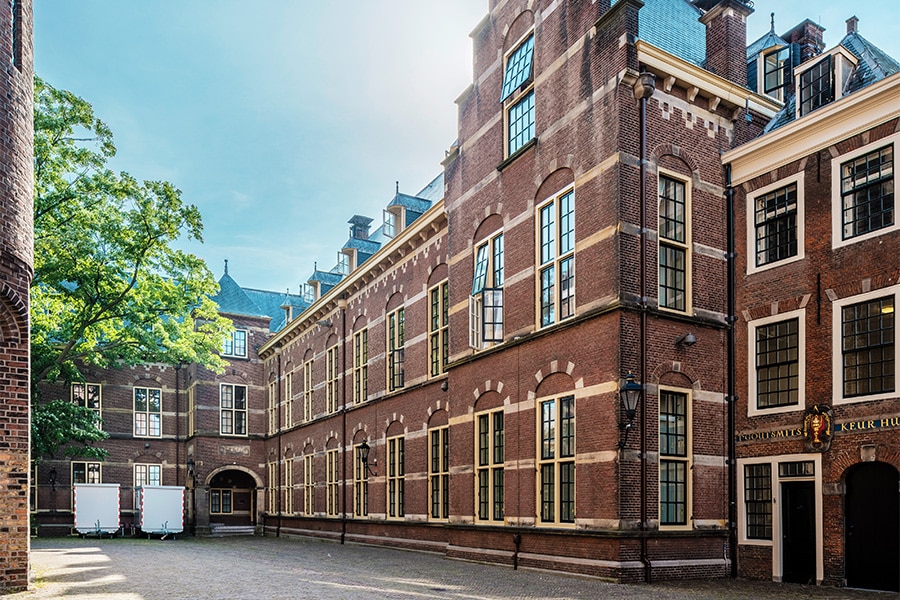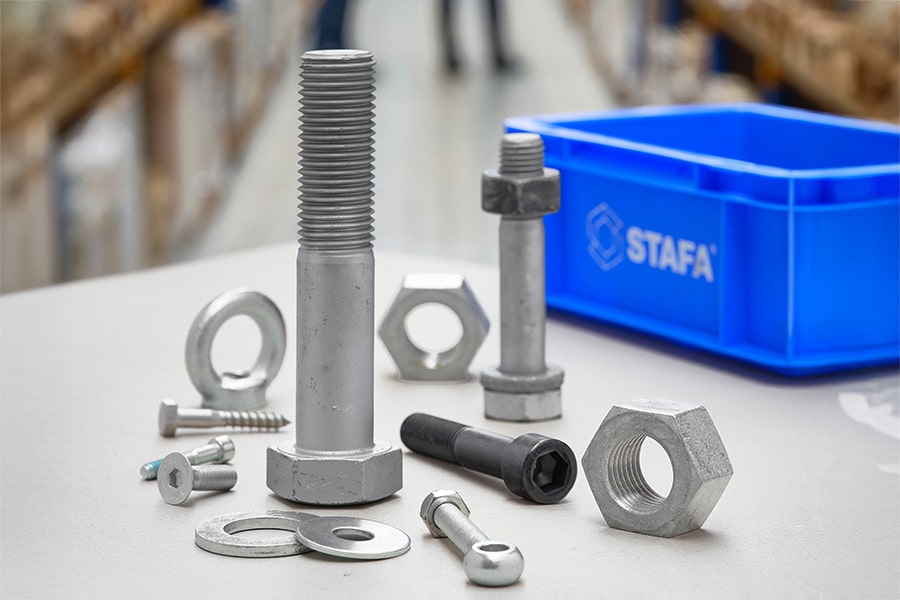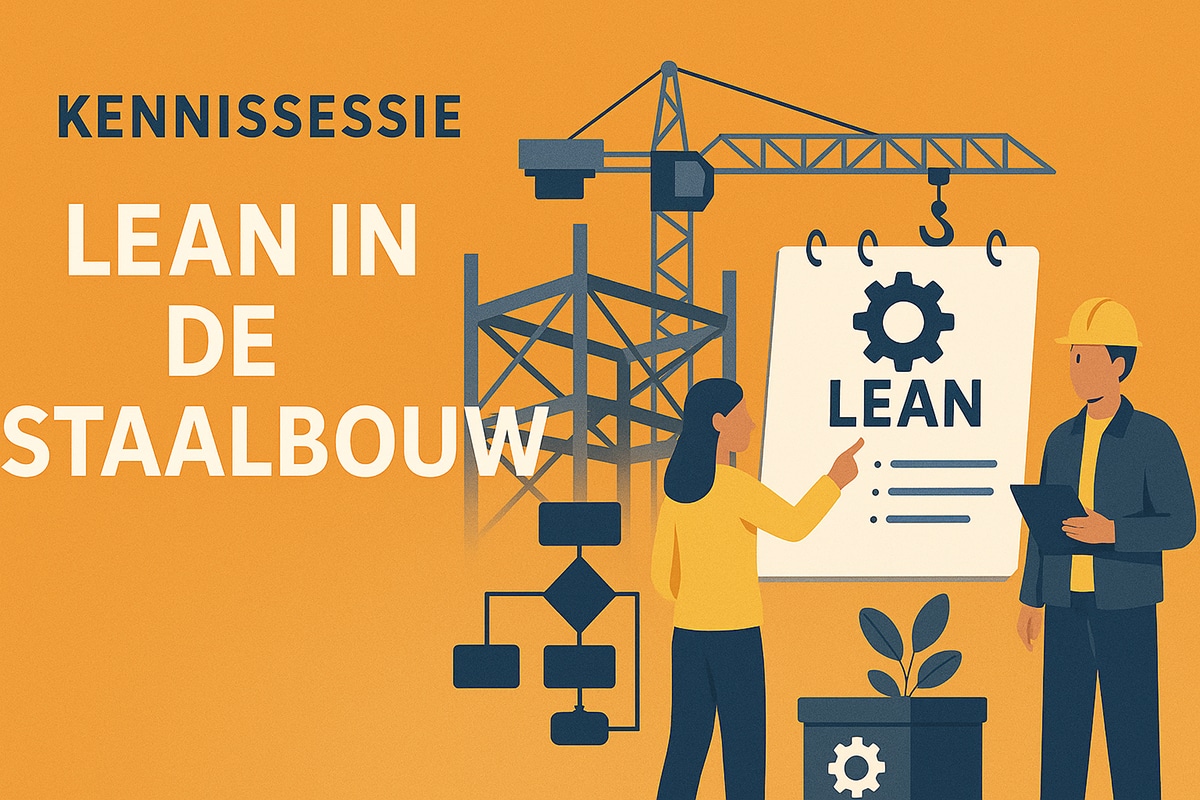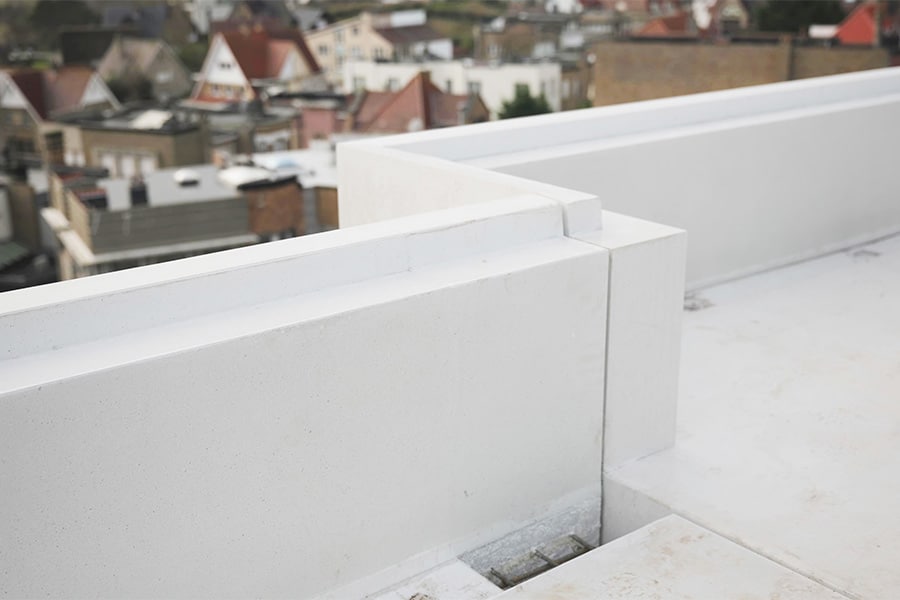
Demand for concrete renovation grows even in times of COVID-19
Contractors, engineering firms, architects and other clients in many cases need specific additional expertise to perform concrete investigations, make damage diagnoses and provide a repair solution. To do so, they call on outside experts. Sanacon (Zwijnaarde) has built a solid reputation in 5 years as an engineering firm for concrete research and advice. To respond to the increasing market demand and guarantee customers an even more versatile offer, this spin-off of UGent continues to invest in The expansion of knowledge and recruitment of new engineers with appropriate profiles.
Text | Johan Debaere Image | Sanacon
If it depends on Sanacon, no one will have to worry anymore about the condition and maintenance of concrete structures. After all, the engineering firm, which specializes in concrete research and advice, strives for a world without concrete problems by converting scientific knowledge and research methods into practically usable advice, tailored to the customer's needs. "As a spin-off of the Laboratory Mangel for Concrete Research, we have a unique expertise in the field of damage diagnosis, structural analysis, cathodic protection, monitoring, quality control and technical advice," explains managing director Tim Soetens. "Together with Mathias Maes, I stood at the cradle of this agency in 2015. We work on behalf of contractors, engineering firms, architects, management companies and building owners. Since 2017, we have been continuously expanding our team to continue to meet the expectations within a rapidly growing market of concrete renovation and concrete consulting in general. Today, our team consists of 5 full-time engineers and 2 freelancers, supplemented by a technical assistant and an administrative force."
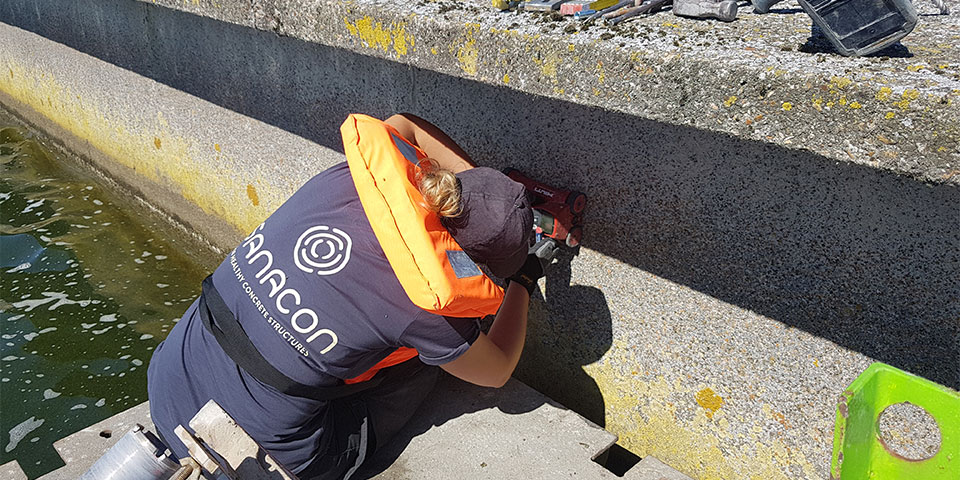
Sanacon's concrete experts conducted research at the De Blankaart Savings Basin in the Westhoek.
Cathodic protection
Sanacon can already present a broad portfolio of projects, including the drainage of the Blankenbergse Vaart, Spaarbekken De Blankaart, the House of Labor, HoGent, Brussels Expo, Thiepval Memorial, the railroad tunnel of the NZ-connection, the bridge cellar of the Dampoortbrug, the Wasserij der Vlaanderen and the jubilee complex in the Zoo of Antwerp, the Leopold II tunnel, ... to name but a few. However, the engineering firm receives more and more requests from the construction industry, often for aspects for which it does not yet have the expertise in-house. Therefore, the team is constantly expanding its knowledge and new people are also being recruited. "Since 2018, our concrete experts have also been able to help address the issue of reinforcement corrosion using cathodic protection.
We provide general advice, design systems, install test surfaces and carry out control measurements. For this we have a number of employees with level 3 certification according to the European standard EN ISO15257:2017," indicates the business manager. "Contractors often don't have the knowledge to do that themselves, so we can add value for them. We also do our own research in the field of galvanic cathodic protection and see how we can apply this in practice. Our job is to make contractors, architects and engineering firms aware of the possibilities of this repair method in the first place and then to increase their confidence in it."
Unburdening the customer completely
The engineering firm of Maes and Soetens is mainly known for concrete research and advice, but recently it has also started to guarantee a complete relief of clients. For example, the specialists actively monitor concrete repair projects and ensure appropriate control during execution. "We also provide support in the writing of specifications and their interpretation during execution. After all, in many projects these specifications have already been written out long before the work finally goes into execution. It is therefore very important for the contractor to interpret these specifications correctly, taking into account the new standards and requirements. To assist our customers in this, our team has recently been expanded with a number of people who come from the execution and who can follow up projects together with the customer," says Soetens. "We also get more and more demand for research regarding the load-bearing capacity of existing structures, for which, for example, reinforcement plans are no longer available. For example, we are involved in the renovation or redevelopment of old buildings with reinforced concrete elements, where our clients ask whether it is possible to possibly provide an additional floor or whether PV panels can be placed on the roof. Together with the client, we examine whether the existing concrete structure is sturdy enough. In case of a negative opinion, we help think about possible reinforcement concepts, such as applying externally bonded reinforcement."
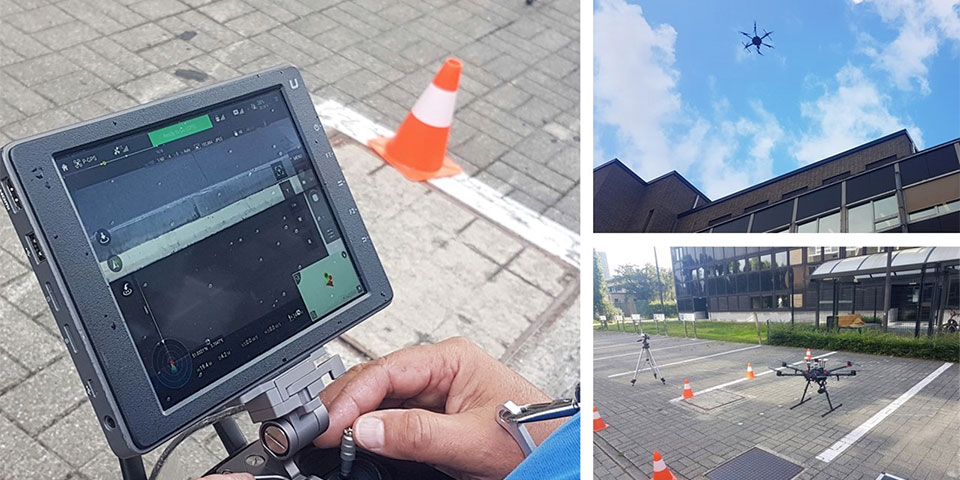
The eaves of HoGent's buildings were inspected using a drone.
Birth Certificate
Meanwhile, at Sanacon, we note that the number of concrete renovation projects continues to increase, even in these times of COVID-19. Today, however, Sanacon no longer focuses only on repairing concrete in the event of damage, but also on preventive examination. This involves examining the concrete without any predetermined damage, allowing for faster anticipation of potential problems. "We used to be contacted when it was actually already too late, but today we want to examine the new concrete elements as soon as a project is delivered. The infrastructure will receive a so-called 'Birth Certificate,' where, among other things, the quality of the concrete, the concrete coverage and any defects will be mapped. Thus, the maintenance profile can be mapped out from day one. The lifespan of reinforced concrete infrastructure will thus be significantly improved," Soetens concludes. "The mistakes of the past must be avoided. That's why we must focus on the preventive rather than the curative."
